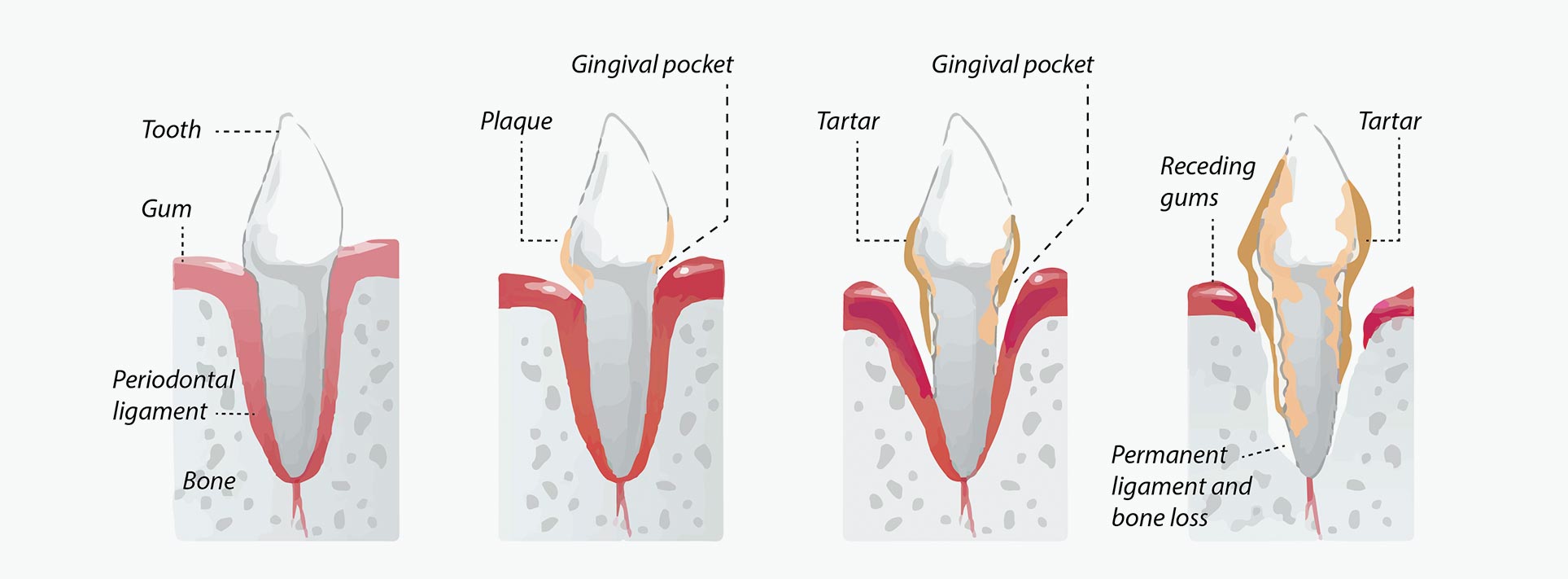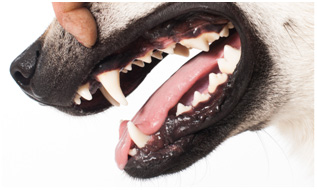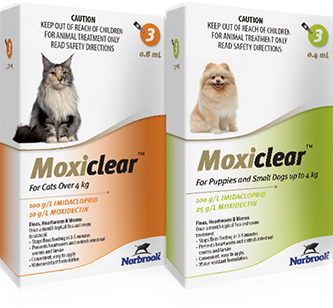Your pet’s good health starts with everyday dental care. Their teeth are vitally important to their well-being and, as they are used every day, they must be cared for daily. Dental disease is one of the most common problems affecting cats and dogs over the age of three.
Without regular care of teeth and gums to keep them healthy, disease can result in irreversible damage to the bone, gum tissue and ligaments that hold teeth in place.
This is called periodontal disease and is the most common problem seen in our pets over the age of three. It is the result of a process that occurs every day that will decay, over time, the structures that hold teeth in place. More than 80% of dogs and 70% of cats develop dental disease by the age of three.
As periodontal disease causes irreversible damage to the teeth, prevention is better than treatment.

Tooth Anatomy
Dogs and cats have two sets of teeth over their lifetime. The initial deciduous teeth, sometimes called milk or baby teeth, begin to erupt before 3 weeks of age but only last till 6 months of age. The permanent teeth replace the deciduous teeth from 3 months and are normally all present by 6 months of age. These permanent teeth must last your pet for their entire life.
What can you do to prevent dental disease in your pet?
Brushing teeth – This will require some training but can be achieved by slowly building up your pet to accepting a brush. Do not use human toothpaste as it can irritate your pet’s stomach. Instead use a flavoured pet tooth paste.
Bones – It is important to talk to your veterinarian about whether bones are appropriate and which size is suitable for your pet. When recommended the bones should always be raw and have no cut surfaces. It is best to supervise your pet when they have a bone. Bones should encourage your pet to chew. Throw away the bone after the pet has stopped chewing, or earlier if the animal has excessively chewed the bone into pieces.
Veterinary diets – The kibble features a unique shape, texture and composition to encourage thorough chewing by your pet. Chewing provides a gentle, abrasive action on the teeth, helping to remove the bacteria that make up plaque.
Treats or toys – Need to be large and hard products to encourage your pet to chew. Use treats recommended by your vet, which remove plaque through physical rubbing and the spread of protective saliva.
Current preventative alternatives and treatment plans available from your vet help ensure that no animal need allow dental disease to become or remain a problem.



